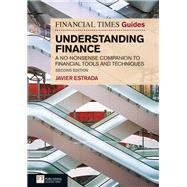FT Guide to Understanding Finance A no-nonsense companion to financial tools and techniques

FT Guide to Understanding Finance A no-nonsense companion to financial tools and techniques
- ISBN 13:
9780273738022
- ISBN 10:
027373802X
- Edition: 2nd
- Format: Paperback
- Copyright: 05/12/2011
- Publisher: FT Press
Rent
Sorry, this item is currently unavailable on Knetbooks.com
Note: Supplemental materials are not guaranteed with Rental or Used book purchases.
Extend or Purchase Your Rental at Any Time
Need to keep your rental past your due date? At any time before your due date you can extend or purchase your rental through your account.
Summary
the perfect business finance desktop companion: quick, easy, accessible, and now fully updated for today's techniques and realities. Fast-paced, easy-to-understand, and accessible insight into finance theory, applications, And The connections between them. Covers new financial products and instruments, utilizes newer data, and presents more detailed coverage. Contains new Q and As, with answers provided on the companion web site.the FT Guide to Understanding Finance, Second Edition is the essential book for all financial professionals and students who want to broaden and deepen their knowledge of both financial concepts and applications. Easy to read and use, it tightly links theory and practice, and guides readers in quickly applying the techniques it presents. This new edition has been thoroughly updated to reflect the latest financial products and instruments, As well as new data. it contains more detailed coverage, plus new Q and as (with answers provided on a companion web site). Coverage includes all these topics, and much more: Basic risk and return concepts. Mean returns, total risk, portfolios, diversification, and systematic risk. CAPM, cost of capital, and three-factor models. Downside risk, risk-adjusted returns, and portfolio optimization. Valuation via dividend discounting, WACC, and other DCF models. Reverse and relative valuation. Bond prices, yields, default risk, market risk, duration, and convexity. NPV and IRR. Real options and corporate value creation. Options, futures, forwards, and currencies. Essential statistical techniques, including normality, non-normality, and regression analysis.









